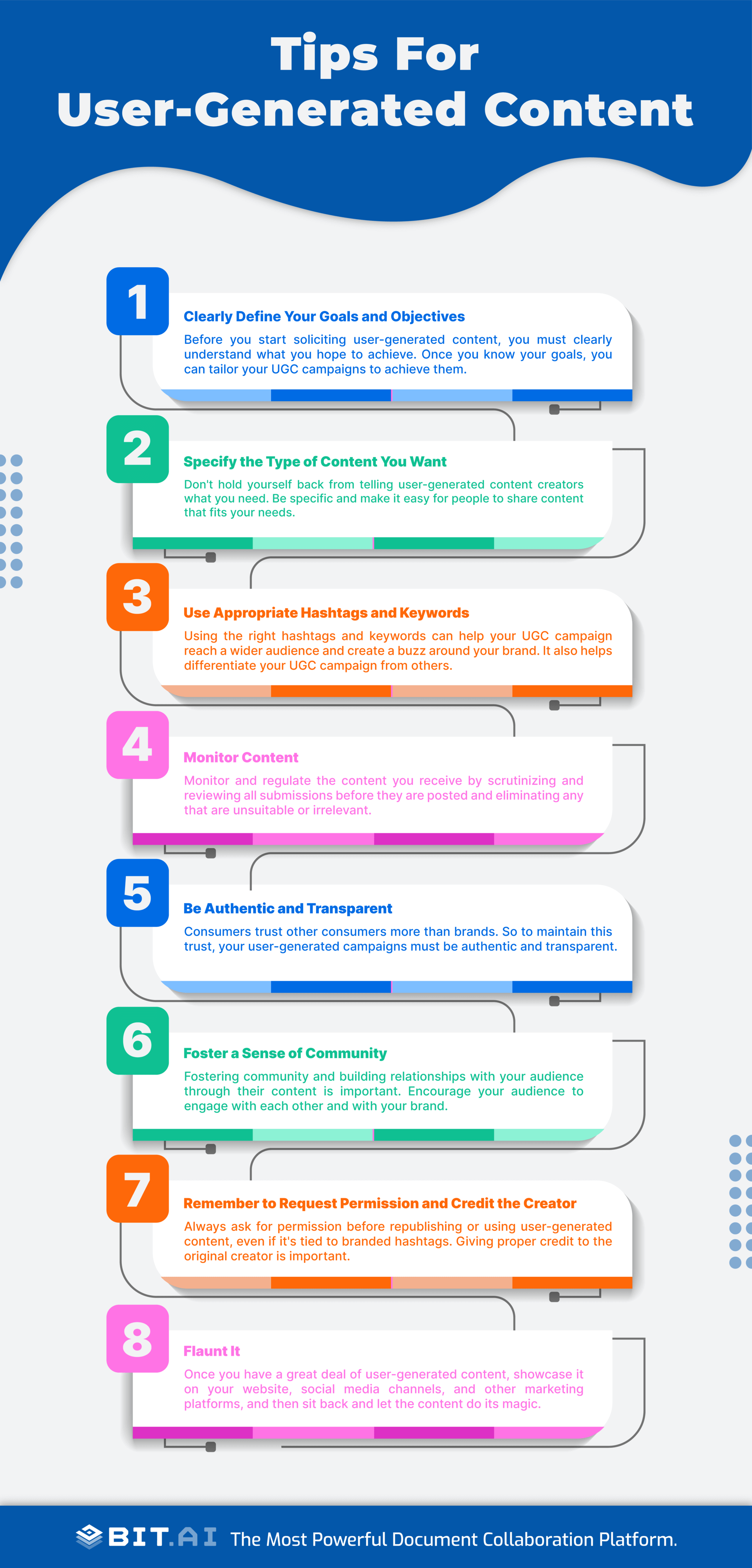User-generated content (UGC) has become an increasingly popular buzzword in recent years, particularly in digital marketing. So what exactly is it?
In simple terms, user-generated content or UGC refers to any content created and shared by everyday people rather than by professional creators or brands. This could be anything from a tweet, a blog post, or a video to an online review or a meme.
For example, imagine you recently tried a new skincare product and loved it. You decide to post about it on social media, sharing a photo of the product and your glowing review. That post is UGC, and it has the potential to reach a wider audience and influence others’ purchasing decisions.
Essentially, if you’ve created something online that’s not part of your job or commissioned by a company, you’ve contributed to UGC’s vast and varied world.
UGC has become a valuable tool for businesses to engage with their audience, build brand loyalty, and generate organic promotion. As consumers continue to place more trust in the opinions and recommendations of their peers, UGC has become an essential aspect of many companies marketing strategies.
So let’s take a closer look at why user-generated content is important!
Why is User Generated Content Important?
1. Ensures Authenticity
One of the key benefits of user-generated content is its authenticity. According to a study, 60% of marketers believe that successful content should have both authenticity and quality as equally important components. And what better way than through UGC? When customers share their experiences and opinions about a product or brand, it feels more genuine and trustworthy than traditional marketing messages. People are likelier to trust recommendations from friends and peers than businesses, so UGC can be a powerful tool for building trust and credibility.
2. Improves Engagement
User-generated content is also a great way to engage with your audience. By encouraging customers to share their content, you can create a sense of community and foster a dialogue between your brand and its customers. This can help build relationships and increase brand loyalty, as customers feel part of something bigger than themselves.
3. Offers Wider Reach
Another crucial benefit of user-generated content is its potential to reach a wider audience. When customers share their content on social media, it can be seen by their friends, family, and followers, who may not have been aware of the brand or product. This can lead to increased brand awareness and potentially even new customers.
4. Acts as Social Proof
Each brand’s unique narrative often offers something specific to its target audience. But consumers always take brand messages with a grain of salt until there is proof otherwise. So when consumers see real people using and endorsing a product or service, it acts as social proof and a second opinion that reinforces your brand message. This creates trust and credibility in the brand.
5. Saves Money

Compared to traditional advertising and marketing methods, user-generated content can be a cost-effective way to promote your brand or product. Instead of paying for expensive ads or sponsored posts, businesses can rely on their customers to create and share content on their behalf. This can be especially beneficial for smaller businesses or startups with limited budgets.
Now that you know the importance of user-generated content, let’s take a closer look at the different types of user-generated content.
Types Of User Generated Content
1. Reviews
Reviews are a type of UGC where users share their experiences or opinion about a product, service, or business. Reviews can be positive or negative, usually found on websites like Yelp, Amazon, or TripAdvisor. They can also be found on social media platforms like Twitter or Facebook. Reviews are valuable because they give potential customers insight into the quality and value of a product or service.
Example: A customer writes a positive review about a restaurant on Yelp, highlighting their excellent service and delicious food during their visit.
2. Social Media Posts
Social media is a popular UGC platform where users can share their thoughts, opinions, and experiences. Social media posts can be anything from a tweet, Instagram post, or story, a Facebook post, or a TikTok video. Brands can encourage users to share their content by creating unique hashtags and running social media contests or challenges.
Example: A user shares a photo of themselves wearing a new outfit they purchased from a clothing brand on Instagram, using the brand’s hashtag. The brand then reposts the user’s photo on its account, creating a sense of community and appreciation for its customers.
Read More: 13 Social Media Post Ideas for Interesting Content!
3. Videos
Videos are a popular type of UGC found on platforms like YouTube or Vimeo. Users can create videos to share their experiences or provide tutorials on a particular topic. Other forms of video content include Instagram stories or reels, GoPro videos, video live streams, etc. Brands can leverage user-created videos by encouraging customers to create and share videos about their products or services.
 Example: A user creates a video tutorial on how to use a particular makeup brand’s new eyeshadow palette. The makeup brand shares the user’s video on their social media channels and website, providing valuable content for their audience.
Example: A user creates a video tutorial on how to use a particular makeup brand’s new eyeshadow palette. The makeup brand shares the user’s video on their social media channels and website, providing valuable content for their audience.
4. Blogs
Blogs are a type of UGC where users can create content about a particular topic. Users can share their opinions and experiences or provide valuable information for their audience. Brands can leverage user-created blogs by collaborating with bloggers to promote their products or services.
Example: A user creates a blog post about their experience using a new skincare product. The skincare brand collaborates with the blogger and shares their blog post on their social media channels and website, providing valuable content for their audience.
Now that you have an idea about different types of user-generated content let’s go over some!
Tips For User-Generated Content
1. Clearly Define Your Goals and Objectives
Before you start soliciting user-generated content, you must clearly understand what you hope to achieve. Are you looking to increase brand awareness, build customer loyalty, or drive sales?
Once you know your goals, you can tailor your UGC campaigns to achieve them. For example, if your goal is to drive sales, you may want to focus on UGC highlighting your products or services.
2. Specify the Type of Content You Want
Study shows that only 16% of brands provide specific directions on how consumers should create and share UGC. However, 53% of consumers want to be told exactly what to do, and 42% want brands to share examples of photos and videos that help them guide in creating content.
This means that UGC creators want you to specify the content you want from them. So don’t hold yourself back to tell them what exactly you need. Be specific and make it easy for people to share content that fits your needs.
3. Use Appropriate Hashtags and Keywords
Hashtags and keywords play a crucial role in the success of any user-generated content (UGC) campaign. Using the right hashtags and keywords can help your UGC campaign reach a wider audience and create a buzz around your brand.
Research and understand the topics and keywords relevant to your target audience by analyzing search trends, social media analytics, or even conducting surveys and polls. Use the right hashtags and keywords relevant to your brand and campaign. This helps to differentiate your UGC campaign from others and can make it easier for people to identify your content as part of your campaign.
Read more: Ethical Branding: Definition, Benefits, Best Practices, and Tips!
4. Monitor Content
It goes without saying that when soliciting user-generated content, monitoring and regulating the content you receive is important. This involves scrutinizing and reviewing all submissions before they are posted and eliminating any that are unsuitable or irrelevant.
 Another important thing to remember is anticipating and managing negative remarks or feedback. Respond to negative comments promptly and with professionalism. Use them to demonstrate to your audience that you value their views and feedback.
Another important thing to remember is anticipating and managing negative remarks or feedback. Respond to negative comments promptly and with professionalism. Use them to demonstrate to your audience that you value their views and feedback.
5. Be Authentic and Transparent
Brand Authenticity and Transparency are the core elements of user-generated content. After all, consumers trust other consumers more than brands. So to maintain this trust, your user-generated campaigns must be authentic and transparent. Clearly state your aims and avoid tinkering with the submitted content.
6. Foster a Sense of Community
Simply creating user-generated content is not enough to build a strong brand community. Fostering community and building relationships with your audience through their content is important. Encouraging your audience to engage with each other and your brand is a key way to do this.
You can do this by creating and participating in online conversations, hosting contests and giveaways, and creating interactive experiences encourage users to share their thoughts and opinions. Furthermore, responding to comments and feedback is crucial in building relationships with your audience and fostering a community.
7. Remember to Request Permission and Credit the Creator
Always ask for permission before republishing or using user-generated content, even if it’s tied to branded hashtags. Giving proper credit to the original creator is important, including tagging them directly in the post and indicating whether you’re using their visuals, words, or both.
Check for how the creator wants to be credited on various channels, and show your appreciation for their content. This keeps you out of legal trouble and ensures content creators stay excited about posting about your brand while helping fans verify that the content is user-generated.
8. Flaunt It
Once you have a great deal of user-generated content, please don’t flaunt it. Showcase it on your website, social media channels, and other marketing platforms and then sit back and let the content do its magic.
Summary
User-generated content has become an integral part of modern marketing strategies. By encouraging customers to share their experiences and opinions, businesses can build authentic relationships with their audience and establish brand loyalty.
Whether it’s through social media posts, product reviews, or other forms of UGC, individuals can shape the conversation and influence the decisions of others.
So the next time you snap a photo of your meal or share a funny tweet, remember that you’re part of a bigger movement of everyday creators. Who knows, maybe your content will be the next big thing!
Further Reads:
- Gated Content: Meaning, Examples & Best Practices!
- 9 Powerful Tips For Writing Great Content For Your Website!
- What is Product Branding? 8 Product Branding Examples!
- 9 Best Social Media Planners You Should Be Using This Year!
- Customer Marketing: Definition, Benefits & Strategies!
- Dynamic Content: What is it & What are the Ways to Use it?



